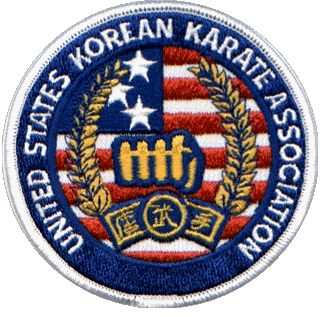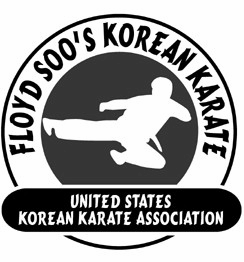|
This is a picture of a very good friend of mine at the summit of Mt. Everest on the 28th of May, 2008. After having to wait at Base Camp for the Chinese Expedition to get the Olympic Torch to the summit, his team finally got the opportunity to make the ascent. Helmut Linzbichler is a 66 year YOUNG Austrian Ski Instructor whom I've had the pleasure of working side by side with at Boyne Highlands for better than a decade.
He and his wife Brigitta ran the Mt. Everest Marathon (17,000' ASL) a couple of summers ago. In fact, when Helmut got back down to Base Camp after summiting Everest, he proceeded to run the (Everest) Base Camp Marathon! What an animal!
I can't express in words how proud I am to know such an amazing man, and to hear first hand of his previous accomplishments. He is my senior by more than a decade, and I cannot even fathom what he has endured during some of his accomplishments...(climbed most of the highest peaks in the world, climbed most of the "Fourteeners" in the Colorado Rockies, ran across the Alps several times, ran across the U.S., visited/climbed the highest point in EVERY ONE of the 50 States, visited every State's Capital, ran at least one marathon in every State in the Union (including Death Valley), and uses several marathons per week to train for Ultra (100 mile) Marathons!
Here then is his story of his ascent to Everest and the Marathon that followed.
By Helmut Linzbichler
For all my English speaking friends this is a short review of our expedition as I was unable to write any updates and dispatches in English. Sorry about that but the restrictions on the mountain due to the Chinese pressure on Nepal were so harsh that we hardly could contact the outside world let alone communicate on a regular basis.
All restrictions were lifted after the Chinese reached the summit with the Olympic torch on May 8, but then we were already in stress if the remainder of the time would be sufficient to reach the summit as nobody could know how long the mountain would be "merciful" in terms of good weather.
Anyway, we started our summit push on May 20 when we ascended from Base Camp (5,350m / 17,552 ft) to Camp 2 (6,450m / 21,161 ft) together with our personal Sherpas. Mine was Pasang who had already summited in 2005 and spoke excellent English, one of the most important requirements for me. Because of my age things were a little different for me. I would certainly need more oxygen and possibly be slower than most of the younger ones so a well defined strategy was crucial.
May 21 we made a final rest day in C2 and from May 22 all thoughts were focused on the summit. We reached C3 on the lower part of the Lhotse face without problems (7,100m / 23,293 ft) and I put myself on oxygen for sleeping and spent the night in rather good sleep.
May 23 we spent climbing the huge Lhotse face first up to the "Yellow Band" (7,600m / 24,934 ft) a famous limestone formation which turned out to be pretty hairy because of the lack of snow, but we safely mastered all and after about 6 hours we reached C4 on South Col (7,960m / 26,115) after we had traversed the so called "Geneva Spur", a prominent dark rock formation, the "entry ticket" to the South Col. The South Col itself is a vast windswept rocky flattening between Everest and Lhotse and certainly the last place you would like to stay longer than absolutely necessary. From 7,500m / 24606 ft on you are in the so called "death zone" where even supplementary oxygen cannot save your life when you stay too long, your body starts "eating itself up."
All times from Base Camp up to here were absolutely within the range of all other climbers - actually in some parts I could even pass some slower climbers but up here I suddenly faced a serious problem. I arrived so dehydrated at the South Col that I felt cramps in my thighs and knew instantly I would not be able to make it to the summit the same night.
So Walter and I decided to split up. He would go with his Sherpa while I would try to recover and follow next night. The only problem was that I would have to spend another 24hours in the death zone and most likely would run out of oxygen. And what if the weather would change. It was a difficult decision but I took the risk.
Well, Walter summited at sunrise on the 24th, was back by noon in the camp and now it was my turn. Pasang and I left the South Col at 7 p.m. and reached the "balcony", a common resting place at 8,500m after 6 hours, and I felt really strong. Unfortunately in front of us there was a Nepali expedition and these guys were deadly slow (they actually brought a 76 (!) year old country fellowman to the summit with frequent stops and every so often changing of the guy’s oxygen bottle). There was no way to pass this group and Pasang had constantly to adapt my oxygen flow. But instead of needing another 5 hours to the summit it took us 8 hours and I was pretty low on oxygen when we finally reached the top of the world at exactly 9:07 local time on May 25.
The notorious Hillary Step turned out to be a serious obstacle this year as it was not covered by snow. It was a 15m vertical climb eased only by a bunch of fixed ropes. Temperature was around minus 35° Celsius (-31° F) and wind speed was approximately 30 to 40 kmh. My down jacket plus my backpack were totally frozen so I could not take out the video camera to film the last steps. Luckily the still camera worked and Pasang took all the shots for the sponsors. It was quite some struggle with all the banners and the wind and we could only make the pictures with me sitting as the Nepali people were around us and after us there were even more people summiting, so it really got crowded. We stayed about 35 - 40 minutes on the summit and I did not use any oxygen during that time. I was aware of the risk but I wanted to save as much as possible for the descent. Normally Pasang would have stopped me at the South Summit (8700m / 28,543) on the way up to make sure we would not run out of oxygen but my performance so far obviously had convinced him that despite my age I would be able to make it down safely without oxygen. And thus it happened. A little ways below the South Summit my oxygen was finished. I concentrated completely on each step especially in the rocky parts and finally we reached again the Balcony. Here I really for the first time during the whole climb felt the impact of the thin air and had to ask Pasang for a longer rest.
And then the weather turned bad within seconds. Though the sky remained blue, a sudden storm came up and we knew any longer stay up here could be fatal. I was so down that I hardly remember how I managed to make it down to the South Col again. I only remember that I reached our tent and cried for Pasang to help me.
In the tent there was my last bottle of oxygen which I used during the night and on purpose we turned the regulator to 2 litres/min instead of only 1 litre. I knew the bottle would be empty in the morning but without sleep I could not imagine to make it down to C3 and lower next morning.
The oxygen brought back some of my energy, the storm had ended sometime during the night and so we started our climb down to C2 in good spirits. Just above the yellow band I ran out of oxygen again but with the certainty to get into thicker air with every step down I was not concerned anymore. Yet the extended stay in the death zone took its toll. I reached the base of the Lhotse face and knew I was safe. It was such a great relief that I literally collapsed. Then Walter who had descended to C2 and a kitchen boy came up from C2 to bring us some drinks and took our backpacks. At the camp they put me immediately in my tent and provided me with food and drinks.
A calculated gamble with death had come to a positive end and the mountain had allowed me to touch its crown.
It was hard enough for me to get up next morning and make it down through the ice fall to the base camp, but somehow Walter and I survived that last critical stretch and were finally heartily welcomed by the base camp staff. I have frostbite on some of my toes of both feet due to the lack of oxygen but this is only a minor damage and will not last long. The only thing is that I still feel some pain when walking or especially when running.
One would think that was it but I had one more commitment: out of respect for the incredible achievement of Tenzing Norgay and Sir Edmund Hillary the two first ascenders on May 29, 1953, I had decided long before the start of the expedition to run the Tenzing-Hillary marathon if I had summited. This marathon was introduced in 2003, the year of the fiftieth anniversary and is annually run on May 29 from the base camp "down" to Namche Bazar, covering the full distance of 42.195km (26.2 mi). And that’s what I actually did. Though I could hardly move with only 1 rest day, I found myself at the start on the 29th at 7 in the morning on a perfect running day with blue sky and moderate temperatures. It took me 9 hours and 25 minutes to reach the finish line in Namche. I was the oldest runner ever and the first one ever who dared to run this grueling race directly after summiting Everest. I ended up being 98th overall out of 120 runners or 19th out of 38 foreign runners. (For more details, see www.everestmarathon.com.
In Kathmandu finally I was told I was not only the oldest Austrian to summit Everest but also the oldest person outside Asia. Shall I be proud of it? I don’t know as I did not have any intent to set any record.
I dedicate this success to all who believed in me and I am proud that I could keep my promise to hoist the BOYNE banner on top of the world. Man, it’s such a good/great feeling, you can’t describe it. Thanks for all your support and your prayers. See you all in December (‘08) at Boyne Highlands.
Helmut
|



